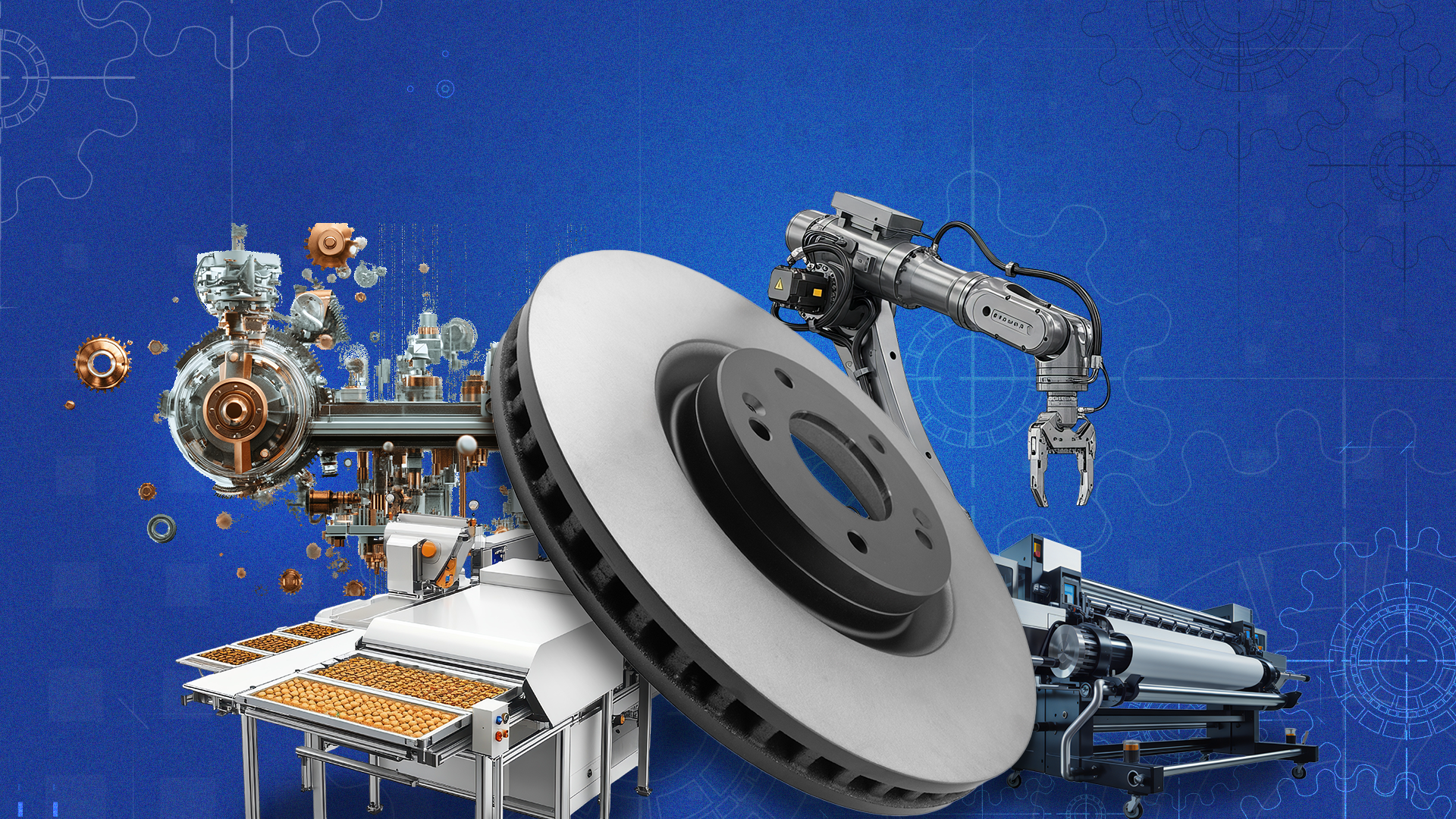Over the past decade, India has made its manufacturing ambitions clear. With the government’s flagship Make in India initiative,[1] the country aims to become a global manufacturing powerhouse that satisfies domestic needs and also supports a competitive export sector. However, behind every car assembled, turbine built, or railway coach fabricated, there is a quieter force driving this transformation: the capital goods sector of India.
Capital goods are the building blocks of industrial growth. They are an umbrella term that includes the machines, tools, and equipment used in large-scale manufacturing. The sector comprises plant and machinery, equipment and accessories required for manufacturing/production, either directly or indirectly, of goods or rendering services required for replacement, modernisation, technological upgradation and expansion. The Heavy Engineering and Machine Tool sector consists of the following major sub-sectors:[2]
- Machine Tools
- Dies, Moulds and Press Tools
- Plastic Machinery
- Earthmoving and Mining Machinery
- Metallurgical Machinery
- Textile Machinery
- Process Plant Equipment
- Printing Machinery
- Food Processing Machinery, including packaging machinery and refrigeration equipment.
For example, industrial freezers used to store frozen foods are technically classified as capital goods and earth-moving machinery deployed in infrastructure projects will also be considered capital goods. As India expands its manufacturing sector, it requires the support of a robust Make in India capital goods ecosystem to lessen reliance on imports. India clocked record engineering goods exports in FY 2024-25, increasing by 6.74% from $109.3 billion in FY 2023-24 to $116.67 billion.[3] This is essential for boosting productivity and fostering self-reliance, as highlighted in initiatives like Atmanirbhar Bharat.
This sector plays a vital role in realising the Make in India manufacturing vision. The government has actively worked over the years to address the demand for such machinery and has introduced various policy reforms. These initiatives not only provide a fillip to the capital goods sector but also support building a robust ecosystem for end-use industries such as Energy, Auto, Aviation, Textiles, ESDM, Pharma, Chemical, etc. Let us therefore explore these initiatives and their impact on capital goods.
The Make in India initiative for capital goods manufacturing
As India aims to become a global manufacturing hub, the government remains committed to creating the right environment for industries to expand, invest, and scale through the Make in India initiative. These measures form a key component of the broader Make in India initiative, launched in 2014 to boost the manufacturing sector’s share in GDP, create employment opportunities, and enhance technological capacity. The capital goods industry plays a pivotal role in India’s economic framework by enabling large-scale manufacturing and infrastructure expansion. Backed by rapid urbanisation, massive infrastructure investments, and robust government backing, the sector is well-positioned to foster sustainable industrial growth and strengthen India’s global competitiveness.
Policy environment
The policy environment for the capital goods sector includes:[4]
- No industrial license is required for the sector.
- FDI up to 100% permitted on automatic route (through RBI) except from the countries having land borders with India.
- Quantum of payment for technology transfer, design and drawing, royalty, etc. to the foreign collaborator is not restricted.
- There is no restriction on imports and exports.
National Capital Goods Policy
One of the key steps in this direction was the launch of the National Capital Goods Policy in 2016. It outlined clear objectives for capital goods and their development. To advance this policy, the Scheme for Enhancement of Competitiveness in the Indian Capital Goods Sector - Phase II was announced in 2018, with a substantial budget of over ₹1,207 crore.[5] It aims to:
- Enhance competitiveness in the capital goods sector through increased heavy industry investment across India, skill development, advanced manufacturing, and cluster growth.
- Launch a Technology Development Fund and establish a PPP-based fund for tech acquisition, IPR purchases, and commercialisation.
- Establish Regional Skill Centres and build greenfield Centres of Excellence for advanced manufacturing training.
- Modernise SME Units and help SMEs upgrade to energy-efficient, digitally controlled industrial machinery in India.
- Upgrade testing infrastructure to enhance testing and certification facilities that meet global standards.
Broader policies empowering capital goods manufacturing in India
Broader programmes and policies introduced by the government have provided essential support to enhance the scale and quality of India's capital goods sector. These policies are not directly aimed at capital goods but focus on manufacturing and infrastructure as a whole. Nevertheless, they have a direct influence on the growth of India’s capital goods sector.
Production Linked Incentive (PLI) Schemes
Government initiatives in manufacturing—particularly the Production Linked Incentive (PLI) schemes—are exerting a significant influence on the sector. For example, over $5.5 billion has been designated to enhance large-scale electronics manufacturing alone.[6] Similar incentives are implemented for automobile components,[7] solar equipment[8] and other high-value manufacturing segments. As these industries expand production, the demand for capital goods such as machinery and precision tools continues to grow, strengthening the domestic ecosystem that supports them.
Programmes under the Skill India Programme (SIP) umbrella
The Pradhan Mantri Kaushal Vikas Yojana 4.0 (PMKVY) has played a vital role in developing India’s highly skilled labour force. This programme offers over 400 courses and supports India’s population with targeted short-term training in the latest technologies and industry practices, including AI, robotics, cybersecurity, and more.[9] Additionally, initiatives like the Jan Shikshan Sansthan (JSS) are encouraging regional skills development in rural areas,[10] helping to empower local workforces for manufacturing units, industrial zones, and engineering sectors of India.
Samarth Udyog 4.0
To strengthen the Make in India capital goods sector further, the government is empowering manufacturers through the Samarth Udhyog 4.0 programme. This program brings together manufacturers, technology providers, and end users to accelerate the adoption of Industry 4.0 technologies in India.[11] As part of the initiative, the government has established five Centres of Excellence dedicated to smart manufacturing. These centres demonstrate real-world applications of automation, robotics, and data-driven production, assisting businesses in exploring and adopting new technologies.
PM Gati Shakti
One of the most impactful enablers of capital goods industry growth is the PM Gati Shakti Mission. This digital infrastructure development platform integrates planning and execution across 16 key ministries, creating a unified approach to industrial development.[12] The platform enhances connectivity between manufacturing zones, logistics hubs, and industrial clusters. Gati Shakti is streamlining the movement of goods and reducing transit times for heavy equipment and machinery. These improvements boost supply chain efficiency and reduce logistics costs, which are key factors that directly support the expansion and competitiveness of the capital goods sector.
As infrastructure development in India accelerates, creating smarter cities and connected hubs, the capital goods industry is set to strengthen its foundation for nationwide growth and easier access to emerging industrial markets. PM GatiShakti plans 293 projects worth ~US $163 Bn, offering coordinated, data-driven infrastructure investment opportunities.[13]
Further, schemes such as RoDTEP (Remission of Duties and Taxes on Exported Products), MOOWR (Manufacturing and Other Operations in Warehouse), Duty Drawback and Export Promotion for Capital Goods (EPCG) provide necessary support for setting up manufacturing operations in the country.
Eyeing out opportunities in India’s capital goods sector
India’s manufacturing sector contributes nearly 17% to India’s GDP, amounting to over ₹14 lakh crores.[14] To support this enormous industry, a correspondingly large capital goods sector is vital. This offers investors a broad range of avenues they might consider investing in.
Currently, capital goods account for 1.9% of India’s GDP.[14] However, as India moves towards its target of 25% manufacturing, the role of capital goods will grow considerably. These goods also have a strong multiplier effect on the economy, and investing in this sector enables more industrial output and creates value across the supply chain, from raw materials to finished products. Whether it’s supporting the shift to electric mobility, expanding renewable energy infrastructure, or digitising factories, the demand for high-quality equipment is rising across sectors.
Some of the key products across Capital Goods sub-segments where India is a net importer and has investment potential include:
- Plant Machinery - Air/Vacuum Pumps & Compressors and Filtration & Purification System
- Machine Tools - Metal Rolling Machinery and Mold & Molding Machinery
- Earthmoving & Mining Equipment - Graders & Levelers and Bulldozers & Angledozers
- Textile Machinery - Weaving Machines (Looms) and Knitting, Lace & Embroidery Machines
For investors seeking exposure to India’s industrial growth story, capital goods market trends are evolving in a positive direction, and the sector offers both scale and staying power, anchored by domestic demand and an increasing push toward exports and high-tech manufacturing. The cascading effects of a thriving capital goods industry will help shield against global uncertainties, making it a generally safer investment.
If you want to learn more about India’s capital goods industry and the manufacturing sector, feel free to visit investindia.gov.in.

